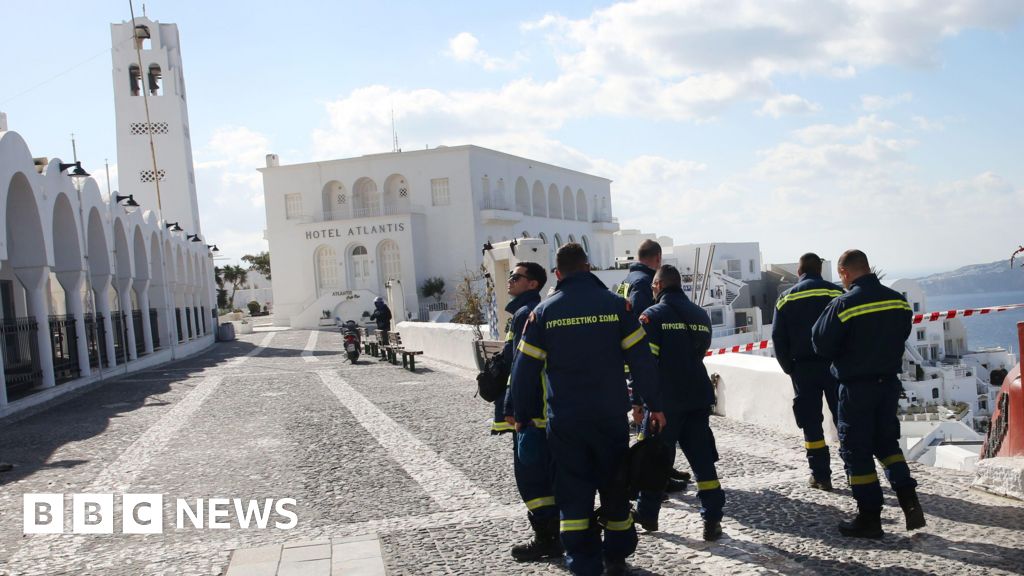Several more earthquakes have struck waters around the Greek island of Santorini just hours after authorities there declared a state of emergency.
The tourist hotspot has been rocked by seismic activity this week with thousands of earthquakes recorded since last Friday.
On Thursday evening, a 4.6 magnitude quake was recorded at 20:16 local time (18:00 GMT) in the sea between Santorini and another island, Amorgos, followed by a 4.2 magnitude quake roughly two hours later.
Santorini residents have begun night patrols amid fears of looting on the island, which has largely been left deserted as most residents have left.
More than 11,000 people have departed as authorities report earthquakes are being recorded on a minute-by-minute interval.
Experts have warned it is unclear when this period of “seismic crisis” on the popular tourist island might end.
Thursday’s quakes have so far not been as severe as the 5.2 magnitude shock which occurred on Wednesday in waters between the two Greek islands.
So far no injuries have been reported, and there has also been no major damage on the island.
But authorities are preparing in case a larger quake hits. On Wednesday, they warned of landslide risks to parts of the island.
Magnitude refers to the size of an earthquake, with increases marked as decimal points.
A magnitude 6.0 and above is considered severe, whereas a magnitude 5.2, the strongest experienced so far in the region, is considered moderate.
On Thursday, Greek officials said the state of emergency for the island would be in place for nearly an entire month, until 3 March.
Greece is one of Europe’s most earthquake-prone countries. Seismologists have told the BBC it is difficult to predict how long the recent wave of seismic activity will last, with authorities warning it could go on for weeks.
“It is really unprecedented, we have never seen something like this before in [modern times] in Greece,” said Dr Athanassios Ganas, research director of the National Observatory of Athens.
He told the BBC: “We are in the middle of a seismic crisis.”
Those remaining on the island have raised fears of a potential tsunami. They have built makeshift defences from sacks placed along the island’s Monolithos beach, where buildings stand very close to thhe water.
The island’s hospital employees have been placed on standby, while extra ambulance crews, police officers, soldiers and military vehicles have also arrived in Santorini, with medical personnel sent from Naxos, another island.
Greek Prime Minister Kyriakos Mitsotakis, who is expected to visit Santorini on Friday, struck an optimistic tone at a meeting of civil protection experts earlier on Wednesday.
“All plans have been implemented. Forces have been moved to Santorini and the other islands, so that we are ready for any eventuality,” he said.
He asked residents to “stay calm and cooperate with the authorities”.
Santorini is on what is known as the Hellenic Volcanic Arc – a chain of islands created by volcanoes – but the last major eruption was in the 1950s.
Greek authorities have said the recent tremors were related to tectonic plate movements, not volcanic activity.
Scientists cannot predict the exact timing, size or location of earthquakes.











